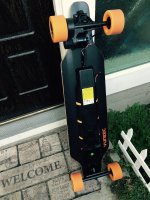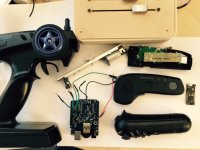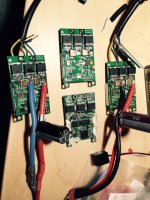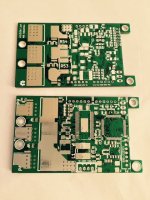erwincoumans said:I have been experimenting more with the VESC (thanks to silviasol build) and most works fine, but I have some question about parameter tuning for 'current' control: the motor spins up immediately from 0 to max current at the slightest move of the controller. When using 'duty cycle' it works fine, gradually faster rotating motor from 0 to max.
What is/are the best parameters to tune in the BLDC tool to make 'current control' work less extreme/more gradual?
Also, I hooked up the VESC to a computer PSU, the +12V lead provides up to 125 AMP, up to 1500Watt (http://www.amazon.com/Corsair-AX1500i-Titanium-Efficiency-CP-9020057-NA/dp/B00MFJ4OBA/ref=sr_1_1?ie=UTF8&qid=1428940650&sr=8-1&keywords=1500watt+psu for about 400$). This works great, as long as you don't push the limits. If you exceed the limit, the PSU simply shuts off, and you can restart after a few seconds.
Is everyone using batteries to test their ESC/brushless motors on the bench, or are the affordable (<500USD) bench power supplies that supply 12V at over 100AMP?
If you have no load on the motor and use current control, it will spin up to max rpm and that is the correct behaviour. If you are driving and thus have load on the motor, the current or torque will correspond to the amount of acceleration you apply, regardless of the speed you have. So regardless if you run at 5 km/h or 20 km/h, a given amount of input on the stick will correspond to the same acceleration in both cases. This feels a lot more natural while driving than other modes. Duty-cycle mode with active freewheeling (or regenerative braking) will feel very weird while driving, since a small input on the stick while driving fast will actually cause braking. I strongly recommend to use current control.









